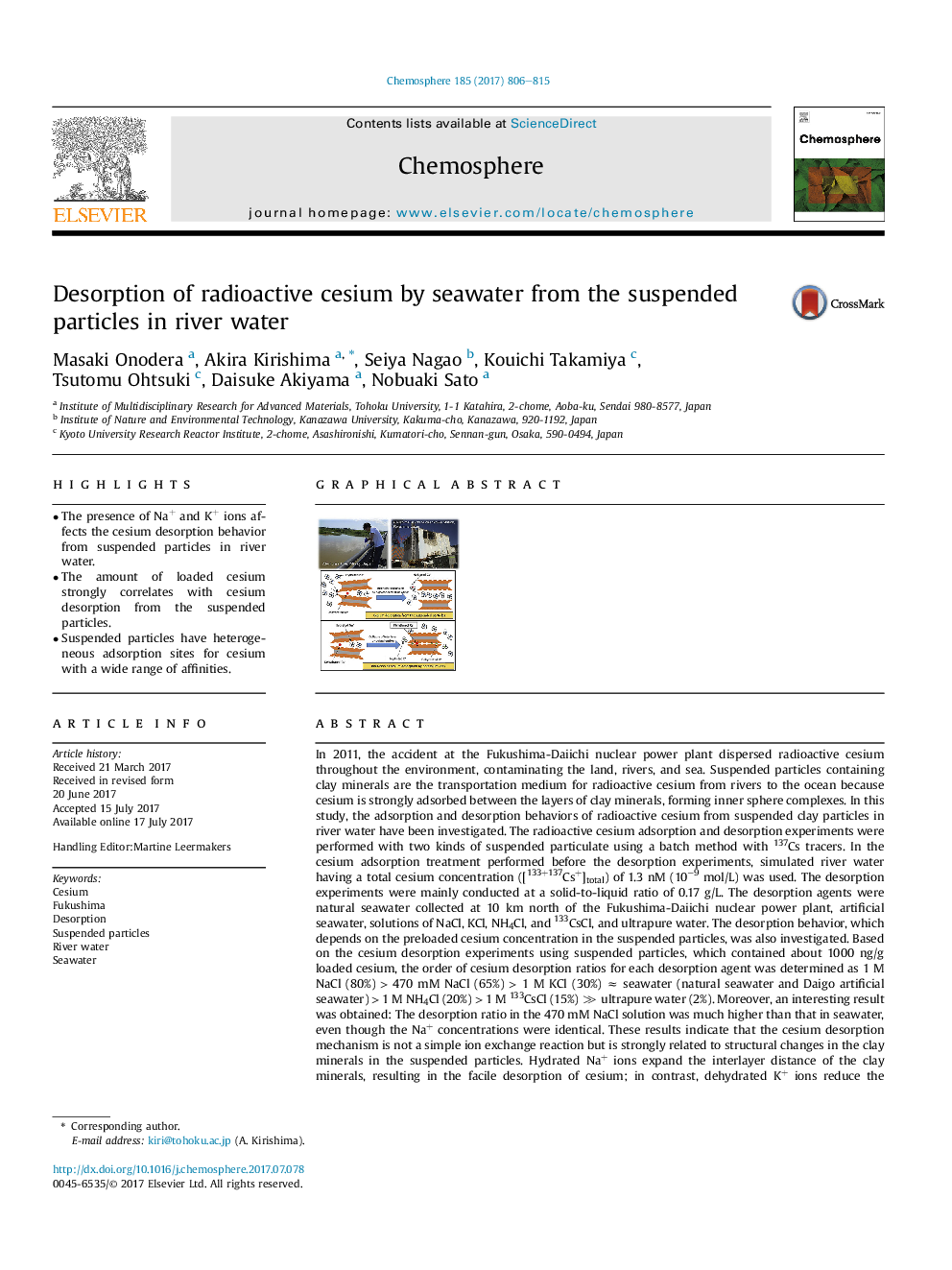| کد مقاله | کد نشریه | سال انتشار | مقاله انگلیسی | نسخه تمام متن |
|---|---|---|---|---|
| 5746713 | 1618786 | 2017 | 10 صفحه PDF | دانلود رایگان |
- The presence of Na+ and K+ ions affects the cesium desorption behavior from suspended particles in river water.
- The amount of loaded cesium strongly correlates with cesium desorption from the suspended particles.
- Suspended particles have heterogeneous adsorption sites for cesium with a wide range of affinities.
In 2011, the accident at the Fukushima-Daiichi nuclear power plant dispersed radioactive cesium throughout the environment, contaminating the land, rivers, and sea. Suspended particles containing clay minerals are the transportation medium for radioactive cesium from rivers to the ocean because cesium is strongly adsorbed between the layers of clay minerals, forming inner sphere complexes. In this study, the adsorption and desorption behaviors of radioactive cesium from suspended clay particles in river water have been investigated. The radioactive cesium adsorption and desorption experiments were performed with two kinds of suspended particulate using a batch method with 137Cs tracers. In the cesium adsorption treatment performed before the desorption experiments, simulated river water having a total cesium concentration ([133+137Cs+]total) of 1.3 nM (10â9 mol/L) was used. The desorption experiments were mainly conducted at a solid-to-liquid ratio of 0.17 g/L. The desorption agents were natural seawater collected at 10 km north of the Fukushima-Daiichi nuclear power plant, artificial seawater, solutions of NaCl, KCl, NH4Cl, and 133CsCl, and ultrapure water. The desorption behavior, which depends on the preloaded cesium concentration in the suspended particles, was also investigated. Based on the cesium desorption experiments using suspended particles, which contained about 1000 ng/g loaded cesium, the order of cesium desorption ratios for each desorption agent was determined as 1 M NaCl (80%) > 470 mM NaCl (65%) > 1 M KCl (30%) â seawater (natural seawater and Daigo artificial seawater) > 1 M NH4Cl (20%) > 1 M 133CsCl (15%) â« ultrapure water (2%). Moreover, an interesting result was obtained: The desorption ratio in the 470 mM NaCl solution was much higher than that in seawater, even though the Na+ concentrations were identical. These results indicate that the cesium desorption mechanism is not a simple ion exchange reaction but is strongly related to structural changes in the clay minerals in the suspended particles. Hydrated Na+ ions expand the interlayer distance of the clay minerals, resulting in the facile desorption of cesium; in contrast, dehydrated K+ ions reduce the interlayer distance and inhibit the desorption of cesium. In conclusion, the desorption of cesium from the suspended particles is controlled by the presence of sodium and potassium ions and the preloaded cesium concentration in the suspended particles.
356
Journal: Chemosphere - Volume 185, October 2017, Pages 806-815
